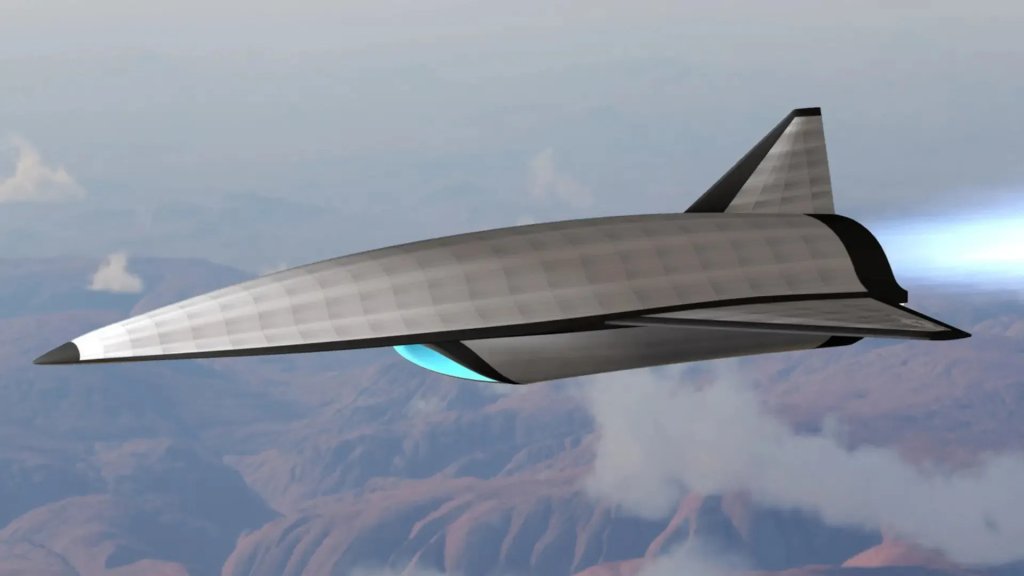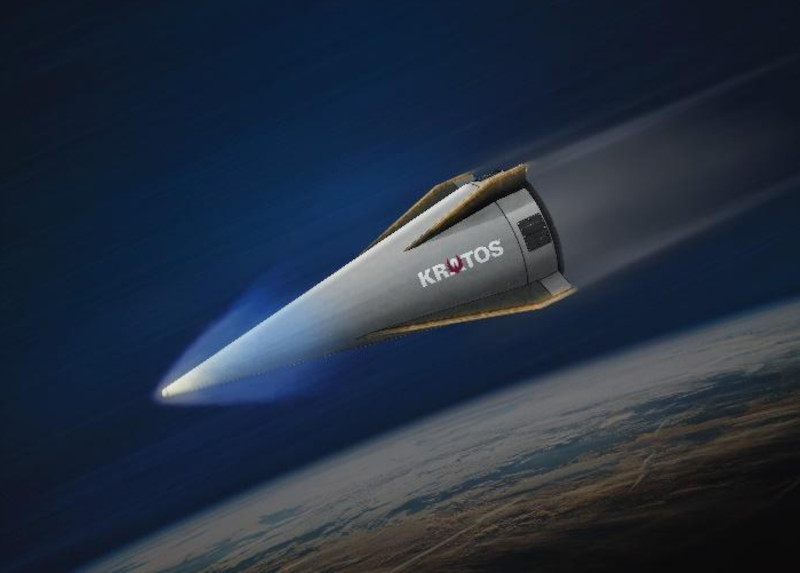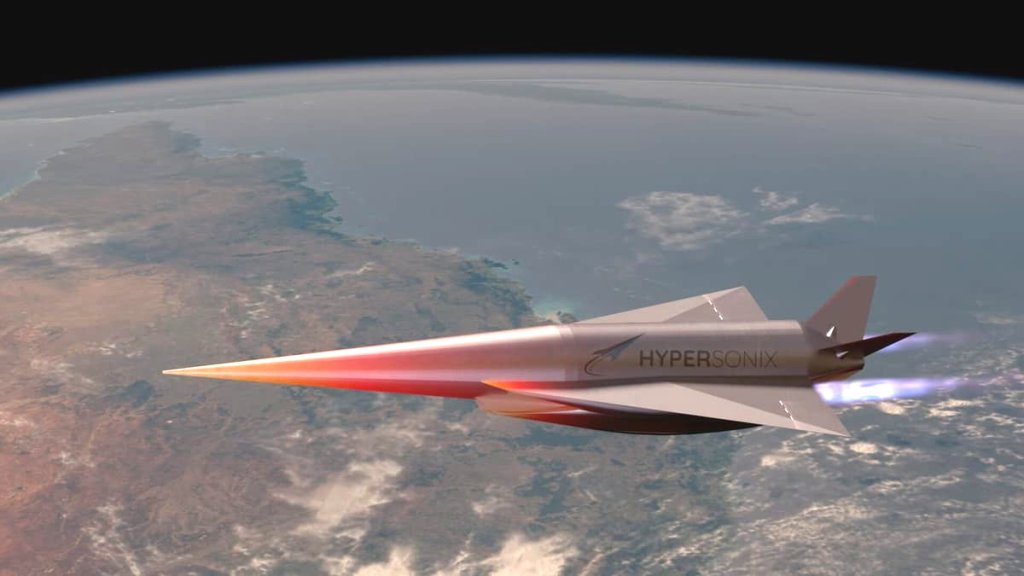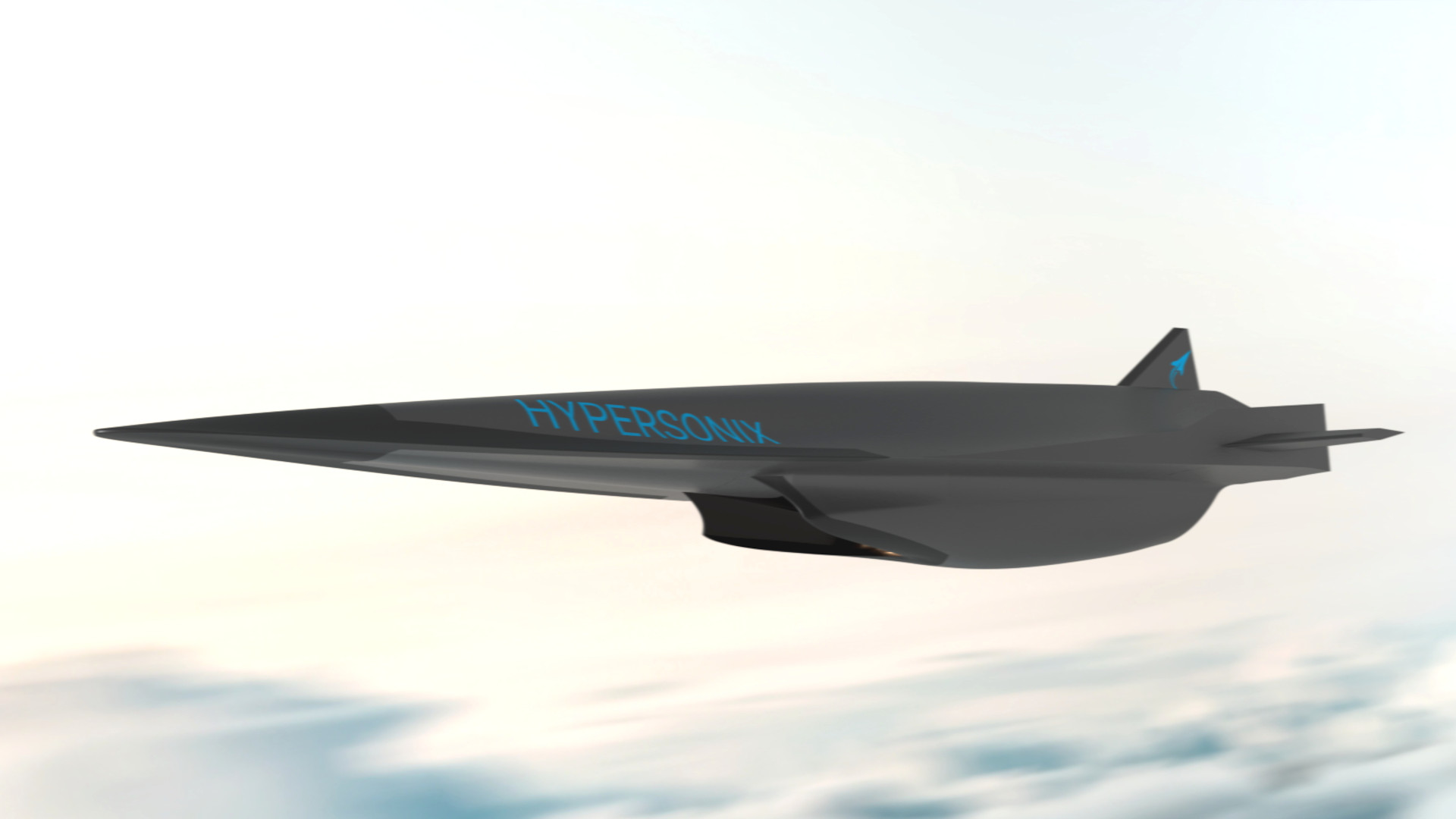Kratos has revealed that it is working on a new drone capable of flying at hypersonic speeds, typically defined as anything above Mach 5. The company has also said it is aiming for the very-high-speed uncrewed aircraft to be “orders of magnitude” less expensive than any comparable design or concept known to exist today.
Kratos CEO Eric DeMarco first disclosed the existence of the hypersonic drone program, which is currently internally funded, in a recent interview with Aviation Week. It is unclear when the project started or how mature the design is at present, or what mission sets it might be intended to perform. Kratos has also not explicitly said if it will be reusable or air-breathing, but describing it as a drone points to both of those things being true.

“We will disclose the name of this specific system at or near initial flight,” a Kratos spokesperson told TWZ when asked for more information.
“Since 2013, a key element of Kratos has been for Kratos to invest our own R&D [research and development], NRE [non-recurring engineering], and capital in order to move fast and rapidly design, engineer, and field affordable relevant systems for the warfighter, which is what we are doing with Kratos Furies Family of Hypersonic Systems,” the spokesperson added. “Similar to Kratos Erinyes and Dark Fury Hypersonic Flyers, this new Kratos funded Hypersonic Drone initiative, included in Kratos Furies Family of Hypersonic Systems, is expected to be orders of magnitude less costly than any other hypersonic system or concept in existence today.”
Erinyes and Dark Fury are both unpowered hypersonic boost-glide vehicles designed to be launched with the help of a booster rocket. Kratos has been developing its own Zeus family of solid-fuel rocket motors in parallel with those vehicles. This work is tied, at least in part, to the U.S. military’s Multi-Service Advanced Capability Hypersonics Test Bed (MACH-TB) effort, U.S. Navy and Missile Defense Agency (MDA) requirements for hypersonic targets, and NASA’s Sounding Rocket Program. Just in January, Kratos received a five-year contract for MACH-TB-related work, which, if all options are exercised, could have a total value of $1.45 billion.

It’s also worth noting here that affordability has long been a key tenet for Kratos when it comes to its drone programs, especially the company’s flagship XQ-58 Valkyrie line.

“The mystery vehicle can be supported by the Hypersonic System Indiana Payload Integration Facility,” or IPIF, according to Aviation Week. “Asked if the IPIF would support only payloads for hypersonic glide vehicles powered by solid rocket motors, DeMarco said vehicles with air-breathing propulsion technologies also are possible.”
Kratos announced just earlier this week that ground had been broken at the site of the future IPIF in Crane, Indiana.

Aviation Week also pointed to a statement that DeMarco made back in 2019 about how, “beyond traditional turbojet and turbofan engines, we are also focused on developing advanced, affordable engines for a new class of hypersonic propulsion system.”
Kratos has, so far, declined to say whether or not its hypersonic drone program is directly related to any other work the company has previously announced. Kratos was named as a member of the Leidos-led team that won a contract to develop a new air-breathing hypersonic platform as part of the Air Force’s secretive Mayhem program in 2022, which we will come back to later on in this story.
Kratos has also been working with Australian firm Hypersonix Launch Systems on the latter company’s DART AE design. DART AE has been described as “a three-meter-long, single-use, high temperature alloy, hydrogen-fueled, scramjet technology driven, autonomous, multi-mission, air-breathing hypersonic platform used to develop, demonstrate, test and evaluate hypersonic technologies and for ‘other’ potential hypersonic applications.”
While it is a powered design, DART AE is also expected to be launched via a rocket booster. Hypersonix had originally targeted 2023 for DART AE’s first flight, but the schedule subsequently slipped at least to the end of last year. Whether or not that design has actually flown now is unclear.

The revelation that Kratos is working on a hypersonic drone also follows the emergence of the U.S. Defense Advanced Research Projects Agency’s (DARPA) Next Generation Responsive Strike (Next RS) effort. From what is known now, Next RS is centered on advancing various technologies that could help in creating a new reusable hypersonic air vehicle capable of performing strike and intelligence, surveillance, and reconnaissance (ISR) missions. DARPA has indicated an actual Next RS prototype or demonstrator design could fly within the next five years.
The Air Force is also involved in Next RS, the stated objectives of which are extremely similar to those of the previously mentioned Mayhem program. The service acknowledged to TWZ last year that there was uncertainty over whether or not there was even a requirement for this kind of hypersonic strike/ISR capability and the current status of the Mayhem effort is murky.
Other companies are or at least have been working on reusable hypersonic aircraft designs. The Hermeus Corporation is notably working up to the first flight of its uncrewed Quarterhorse Mk. 1 aircraft, which is set to be staged from Edwards Air Force Base in California. The Quarterhorse Mk. 1 is powered by a J85 turbojet and is not expected to fly at even supersonic speed. Hermeus says this is the first stepping stone toward a hypersonic design that will feature its Chimera Turbine Based Combined Cycle (TBCC) propulsion system.

A practical TBCC propulsion system has long been held out as a holy grail for very high-speed reusable aircraft. Ramjets and scramjets typically used to propel air-breathing air vehicle designs to hypersonic speeds do not work properly at subsonic speeds and often have difficulty performing even at low-supersonic speeds. This is why rocket motors are usually used to provide an initial boost for hypersonic air vehicles. TBCCs include jet engines that work at lower-speed regimes and offer the ability to seamlessly switch between high and low-speed modes on demand. As such, an air vehicle with TBCC propulsion would be able to take off and land from existing runways like any other aircraft, but be able to cruise at high-supersonic or even hypersonic speeds. This, in turn, would offer immense flexibility to perform a host of potential missions.
More details about Kratos’ hypersonic drone project may begin to emerge now that its existence has been disclosed, especially if a first flight may be getting closer on the horizon.
Contact the author: joe@twz.com
